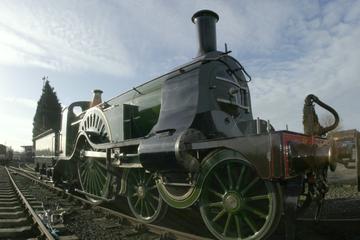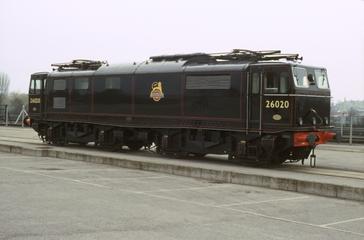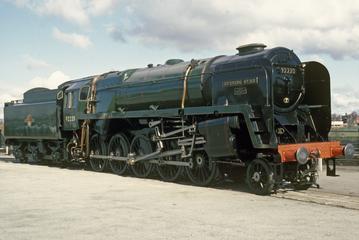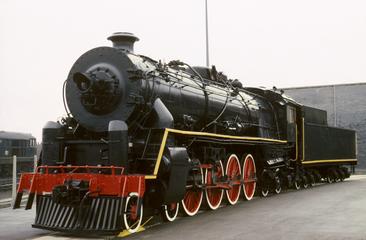
Great Northern Railway 0-6-0ST steam locomotive, No 1247, 1899


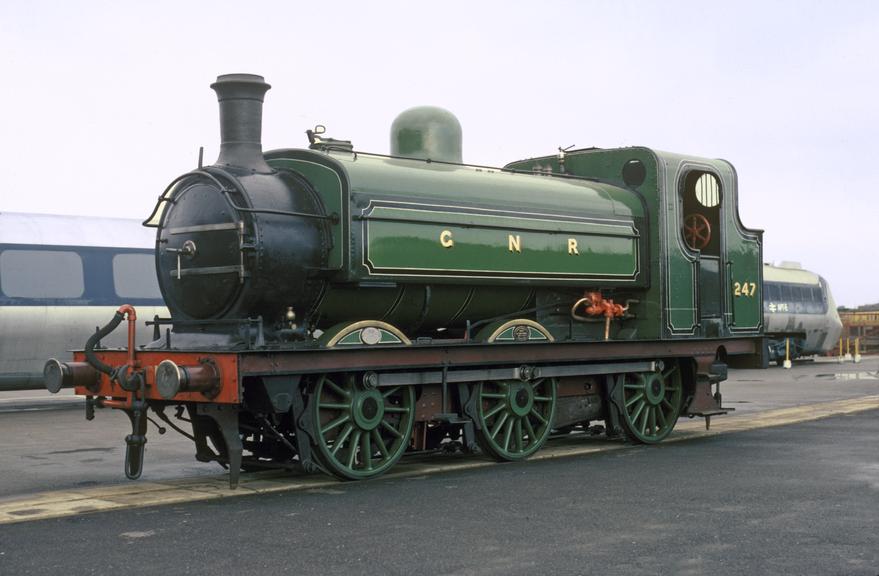

Steam locomotive, No 1247, 0-6-0ST, Great Northern Railway, designed by H. A. Ivatt, built by Sharp Stewart & Company in 1899, withdrawn from service in 1959. Length: 31' 3 3/4"; width: 8' 7"; weight: 51 tons.
The Class J13 was introduced by Henry Ivatt in 1897 for shunting and short trip-freights on the Great Northern Railway (GNR). They were 0-6-0ST – ‘saddle tank’ – locomotives. This meant that a single water tank rested above and around the boiler top, rather than two tanks on either side. The 0-6-0 wheel arrangement and small-diameter wheels were ideal for low-speed shunting, with all the weight of the locomotive available to provide adhesion. The class was based upon Patrick Stirling’s Class J14 of 1892, which had a domeless boiler; Ivatt’s version was given an enlarged boiler with dome to prevent water from carrying over into the cylinders, causing damage.
Between 1897 and 1909, 85 Class J13s were built at Doncaster Works and by external contractors. They became widespread around the GNR’s large goods yards and depots, with concentrations found at King’s Cross, Doncaster, New England (Peterborough), Bradford and Manchester.
Beginning in 1922, the J14s were rebuilt by Nigel Gresley with J13 boilers and were merged into the class. After the GNR was absorbed by the London and North Eastern Railway (LNER) in 1923, the type was reclassified Class J52. To differentiate between the two, the Class J14 rebuilds and the Class J13 formed the 52/1 and J52/2 subclasses respectively. Withdrawal of the Class J52/2 began in the mid-1930s but was stopped by the Second World War, with many entering British Railways (BR) service in 1948. Replaced by diesel shunters, the last ceased service in 1961.
No 1247 was built by Sharp, Stewart and Co of Glasgow in 1899 and was renumbered 4247 by the LNER. Under BR ownership it gained the number 68846 and saw out its final years as the King’s Cross shed pilot. It was the first locomotive purchased from BR by a private individual, Captain Bill Smith, in 1959. After several spells of operation on various heritage railways, the locomotive was donated to the National Railway Museum in 1980.
Details
- Category:
- Locomotives and Rolling Stock
- Object Number:
- 1980-7001
- Materials:
- steel (metal), copper (metal), brass (copper, zinc alloy), paint and textile
- Measurements:
-
length: 9544 mm, 51800kg
weight: 51800kg
width: 2616 mm
- type:
- steam locomotive
- credit:
- Smith, W G
